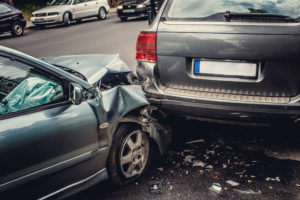Accidents can sometimes be inevitable. That’s why they’re called accidents. However, some occurrences like rear-end collisions are preventable. A rear-end collision is a vehicle accident that occurs when the front of one vehicle collides into another’s rear. Two cars moving in the same direction are usually the vehicles involved in rear-end collisions.
Being in a rear-end collision is frightening and causes various types of injuries like neck and back wounds. In extreme cases, traumatic brain injuries and spinal cord injuries can occur. Additionally, the damages can impact negatively on your overall health and finances.
Causes of Rear-End Collisions
According to the Ohio Department of Public Safety, about 80,000 rear-end accidents occur annually. About 20,000 of these rear-end accidents result in injuries and 60 fatalities.
The National Highway Traffic Safety Administration states that rear-end collisions are the most frequently occurring accident. Subsequently, rear-end collisions account for 30% of all car collisions in the U.S.
Here are some of the major causes of rear-end collisions:
- Tailgating — following too closely behind a moving vehicle
- Distracted or inattentive driving
- Driving while under the influence of alcohol or drugs
- Drowsy driving
- Driving too fast or too slow
- Driver error, for example, a sudden stop of a moving vehicle, especially without signaling other drivers.
- Mechanical defects in the Car
- Disobeying traffic laws
- Sudden change in driving speed
- Road rage
Different Types of Damages in a Rear-End Collision
Rear-end collisions account for one in four accidents, making it one of the leading causes of car accidents in America. Sometimes damages caused after a rear-end collision may not be immediately visible.
Damages caused by rear-end collision can cause bodily harm or auto damage. Specific injuries that could get suffered by the drivers and passengers of the vehicles in a rear-end collision include:
- Bodily injuries like whiplash, strain, sprain, neck and back injuries, etc.
- Lost wages
- Medical expenses
- Lost earning capacity
- Property damages
- Out-of-pocket expenses
- Emotional distress
- Stress and anxiety
- Pain and suffering
- Humiliation and embarrassment
What Are the Auto damages in a Rear-End Collision?
The collision speed dramatically affects the severity of the damages to the vehicles in a rear-end collision. However, even minor injuries can have underlying issues that might significantly affect the car.
One common auto damage in a rear-end collision is damages to the vehicle’s trunk. When the trunk of a car becomes damaged from a rear-end collision, it could lead to other issues. Examples include having issues opening the trunk, lock difficulties, water seepage, popping open of lids unexpectedly, and alignment issues.
Following a rear-end collision, you could have alignment problems. Symptoms of alignment damage include:
- Wobbly steering
- Unusual vibration of the vehicle
- Car pulling to one side while driving
When there are alignment issues, your vehicle experiences stress which further leads to the following:
- Excessive wear and tears.
- Reduction in strength of the car’s frame
- Misalignment of the warning system
- Bent frame
- Electrical issues
- Issues transmitting signals
- Damages to safety devices like parking camera aid and motion sensors
- Damages to back and tail lights
How Much Will I Get in Ohio for a Rear-End Accident?
Given that there are so many factors to be considered, calculating compensation for rear-end collisions might be difficult. Typically, the compensation you get after a rear-end accident is the total of your car repairs and injuries. Details like the vehicle’s initial value, condition at the time of the crash, mileage, and depreciated amount get considered.
When estimating the repairs’ cost, the cost of specific parts that need replacing is considered instead of using a ballpark figure. It can be challenging to put a cost to the injuries from damages in a collision. Effects of injuries differ from person depending on their particular life circumstances.
The following are put into consideration when calculating compensation for rear-end collision:
- Property damage
- Injuries
- Lost wages
- Loss of income
- Permanent disfigurement or physical disability
- Non-economic losses like loss of companionship, pain, suffering, time spent away from family in treatment, etc.
Do I Need To Talk to a Personal Injury Lawyer?
You do not necessarily need to talk to a personal injury lawyer for your compensation in a rear-end collision. However, there are so many benefits to talking to an experienced personal injury lawyer.
Top of the list is that you or your family member focuses on healing and not get bothered with the legalities of getting compensated. A personal injury lawyer also helps to prove negligence and gets you the best settlement for your situation.
Ohio Car Accident Lawyers Can Help You!
Did you or anyone you know suffer losses from a rear-end collision? Our experienced Ohio car accident lawyers can help you. Call us today for a free case review.




